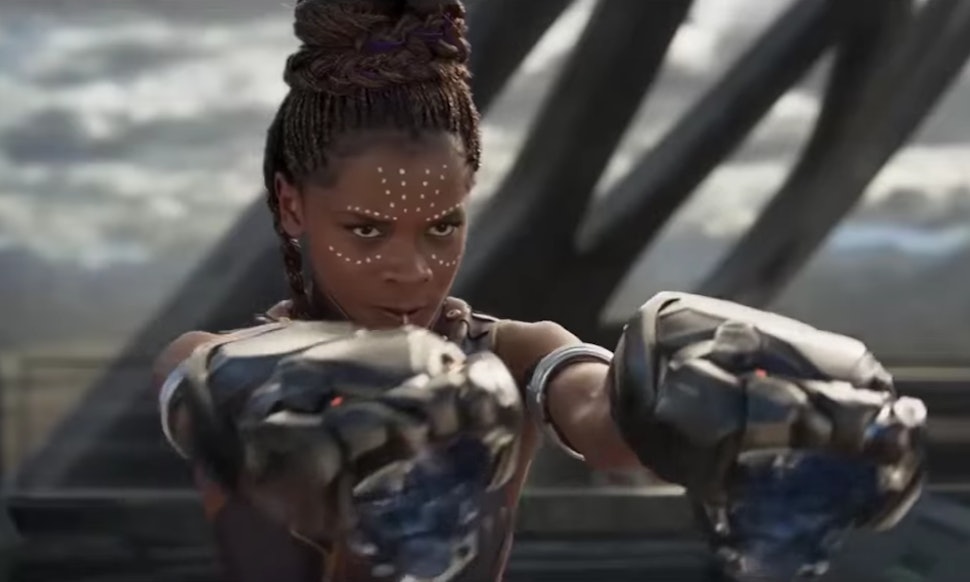The male gaze is
the lens through which men see women. Since we live in a patriarchal
society, the way that society is shaped follows the male gaze. Women are seen
as objects whose function is to please men. Berger simplifies it as “men act
and women appear” (Berger, 47). This means that men are dominant figures in
society who have the pleasure of acting independently and in their sole
interest while women are the submissive figures that depend on men to give them
a sense of purpose. A woman is expected to keep up her appearance so that she
can be considered attractive to men. Mulvey mentions
that the male gaze projects its fantasy on the female figure making them the
bearers of the look and women as the image to be looked at (Mulvey, 837).
 |
| Movie: Pretty Woman |
The male gaze is
a pervasive form of vision in pop culture because most of what see in the media
is a direct reflection of it. Female tropes in television display women as more
passive than active. Finding films that pass the Bechdel test proves to be increasingly difficult.
Television shows like The Big Bang Theory, Two and a Half Men show men as
dominant and women as meant for the sexual and/or visual pleasure of men. In
Big Bang theory, the main female lead is a pretty blonde who is not as bright as the men while in Two and a
Half Men, the women are only there for sexual gratification but don’t hold any
substance. There is a show on Netflix called
Insatiable, where a teenage girl who was fat loses over 70 pounds and is
instantly seen as attractive with the hopes of becoming a pageant queen – a
dream that the character did not believe to be attainable had she been 70
pounds heavier. The stereotypical attractive sought woman is usually white,
feminine, blonde with
straight-haired, skinny.
The
oppositional gaze is a response to lack of representation of black people in
media where black people began making independent films, “black viewers of
mainstream cinema and television could chart the progress of political
movements for racial equality via the construction of images, and did so.”
(Hooks, 117). Hooks said that the oppositional gaze developed from slaves not
being able to look slave owners in the eye, thus denying their right to gaze
(115). Minstrelsy was the only kind of representation of black America before
the oppositional gaze translated into film. Minstrelsy did nothing but
reinforce negative stereotypes of black people by exaggerating their features
and mimicking their dialect. Hooks points out that one of the most famous
examples of this was Amos & Andy. Even today we still have tropes that date
back to minstrelsy. With the advent of the oppositional gaze came
representation but that doesn’t mean it gave appropriate or accurate
representation to the black woman who have “been so abused by the gaze” and
forced to be spectators (Hooks, 125).
 |
| Shuri from the movie, The Black Panther |
Slowly,
we are starting to see more representation of black women due to the increase
of black women entering the cinematic field as writers and directors such
as Shonda Rhimes, Issa Rae,
Ava DuVernay, Mara Brock Akil and Lena Waithe. Most recently, Black Panther was
considered revolutionary it had record box office numbers and showcased black
women as dominant figures in Wakanda on
an even, if not higher, playing field as men.
The
oppositional gaze and being a black female spectator is something I know all
too well (being a black woman and all). Growing up, my parents were big
advocates for black films. However, I found myself trying to make a lot of the
movies I saw make sense for my own life. While I saw faces that looked like
mine, I often saw attitudes that didn’t match mine or my mother’s. I saw
exaggerated, comedic elements of the black experience and often had friends who
would imitate some of the ignorance we’d seen on big screen. That feeling of
“being abused by the gaze” is my own experience.
The
lack of accurate representation annoys me to my core and there is that feeling
of having to settle. Women have been often objectified and had to play dumb in
many of tv shows that I
enjoyed – even those with black actors like Martin and Fresh
Prince of Bel-Air. Female characters usually made dumb decisions and were
the cause of a man’s downfall and I grow tired of only seeing black
representation on the big screen being a reenactment of slavery or displaying
the “coon” trope. I understand that the male gaze isn’t something that is just
going to go away. It has a firm hold on the way that society is organized but
it can be combated with more representation and inclusion in film. The
awareness of actors who have been typecast into roles
helps ease my mind because awareness is the first step. Even when we try to
curate our film choices we have to be critical of what we are absorbing from
them and try not to fall victim to some of its devices.
No comments:
Post a Comment